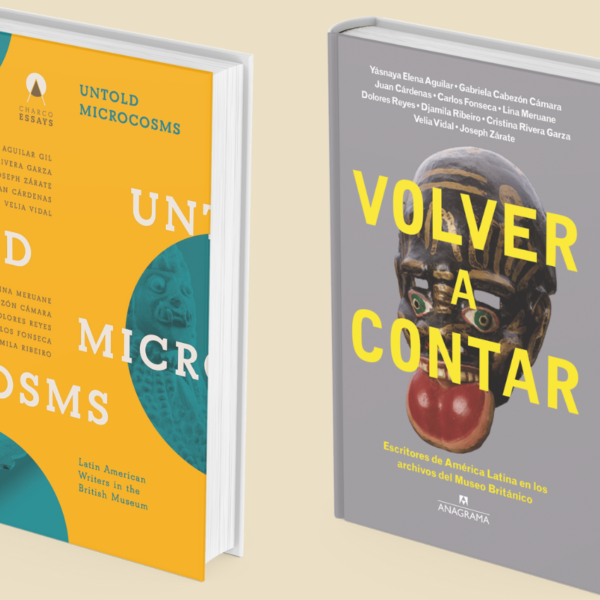Tributaries: the Chocó collection and Afro-Colombia
Tributaries is a trip to my past, my ancestors, and my territory, through the eyes of others that, with the photographs, recordings, narrations, paintings, and objects they chose to take to Europe and the United Kingdom, wrote a story that now allows me to delve deeper into questions about the ways in which we are narrated and, perhaps, find some elements there that may contribute to the construction of more equitable, more just, narratives that move away from racism and exclusion.
In 1960, Brian Moser and Donald Tayler travelled to Colombia as anthropologists mainly interested in ethnomusicology. They arrived at Buenaventura by ship and, later, went on to Bogota; after meeting with several anthropologists and gathering a team of expeditionaries, they decided to begin their journey precisely within communities throughout Buenaventura and the Chocó, to familiarise themselves with the Indigenous Wounaan, who, at that point, were still called Noanamaes.
In London, they received 200 pounds for this trip from the British Museum to purchase objects, and the British Institute of Recorded Sounds (BIRS) provided them with equipment to record music and other audios they might consider important.
I learned of this story in 2021, when I was part of the project “Untold Microcosms” conducted by the Santo Domingo Centre of Excellence for Latin American Research (SDCELAR) and the Hay Festival. For this project we had to choose an object from the Latin American collection at the British Museum and write a fiction or non-fiction piece that would question the relationship between the Museum and Latin American communities.
In my meeting with the curators, I expressed some fundamental concerns about my work as an author, particularly regarding the way in which the racialised other is named, especially Afro communities. I asked if there were any objects related to the Chocó and they then spoke to me about the collection named after my region and which includes more than 300 objects brought back by Moser and Tayler, and some other expeditionaries who also visited the Darien region, which covers parts of what are now the Chocó and Panama.
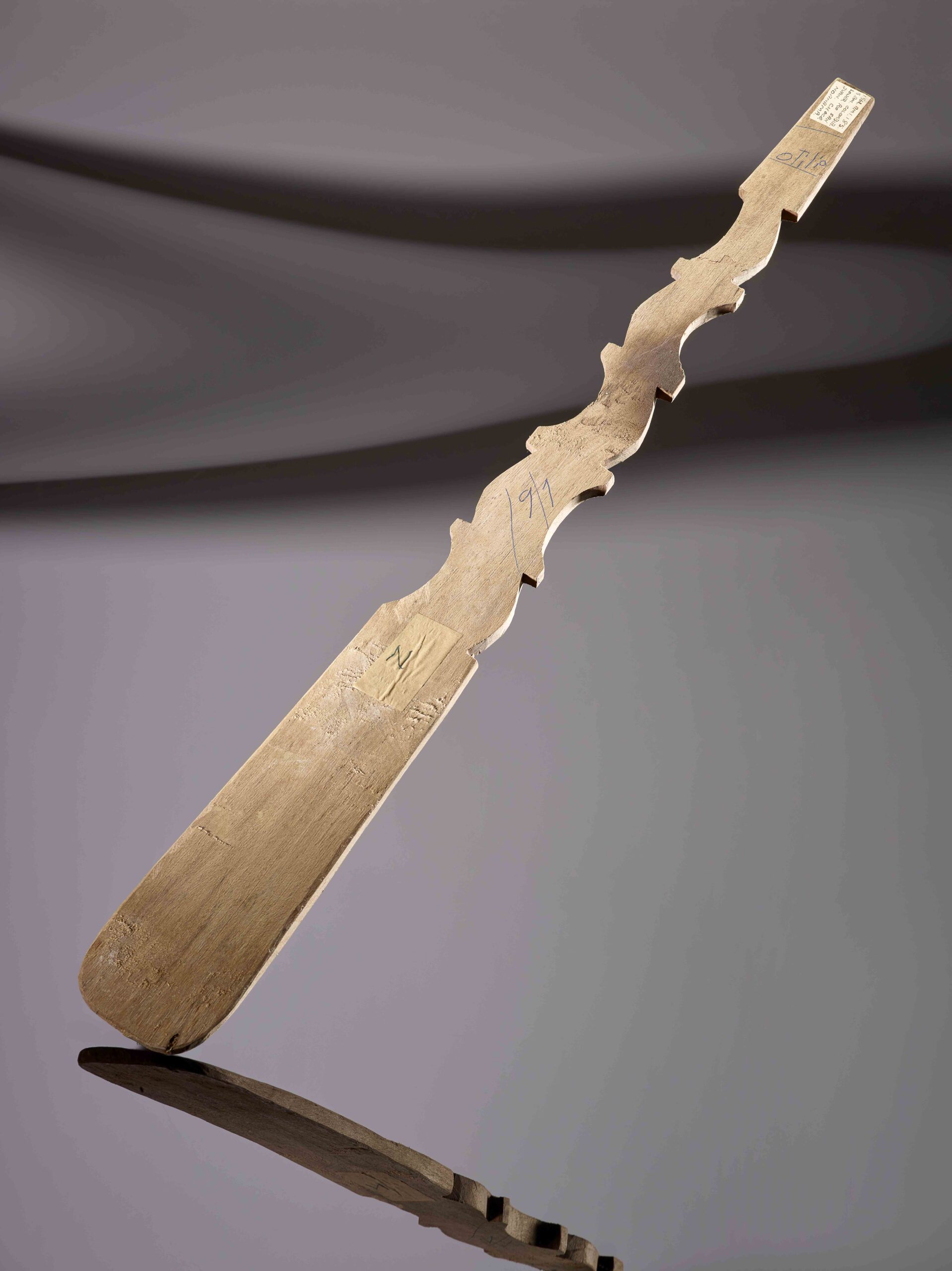
Wooden spoon (Am1962,01.185) © Trustees of The British Museum
During November 2021, I had the fortune to be invited to London by the Museum, where I examined several objects from the Chocó collection and learned about the book The Cocaine Eaters, in which Moser and Tayler narrate their trip to Colombia. During the search for the object I wanted to write about, I paused in front of a ladle, which is a large spoon used to mix sweets, with an inscription at the top of the handle showing the name “Otilio”, that, for me, was the first time a native name appeared in the records of a collection. With that name, handwritten in blue ink on wood, the circle of invisibility I had noticed throughout my exploration of the collection was broken.

Wooden spoon (Am1962,01.185) ©Trustees of The British Museum

Chocó collection ©Trustees of The British Museum

Chocó collection ©Trustees of The British Museum
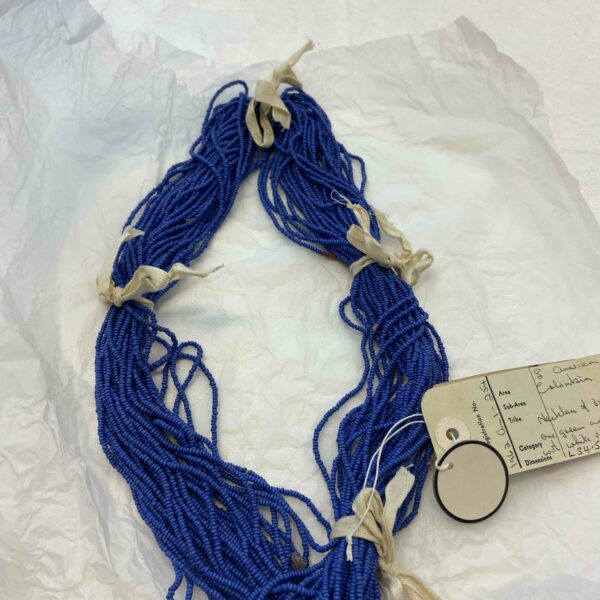
Chocó collection ©Trustees of The British Museum

Chocó collection ©Trustees of The British Museum

Chocó collection ©Trustees of The British Museum

Chocó collection ©Trustees of The British Museum

Chocó collection ©Trustees of The British Museum

Chocó collection ©Trustees of The British Museum

Chocó collection ©Trustees of The British Museum

Chocó collection ©Trustees of The British Museum

Chocó collection ©Trustees of The British Museum
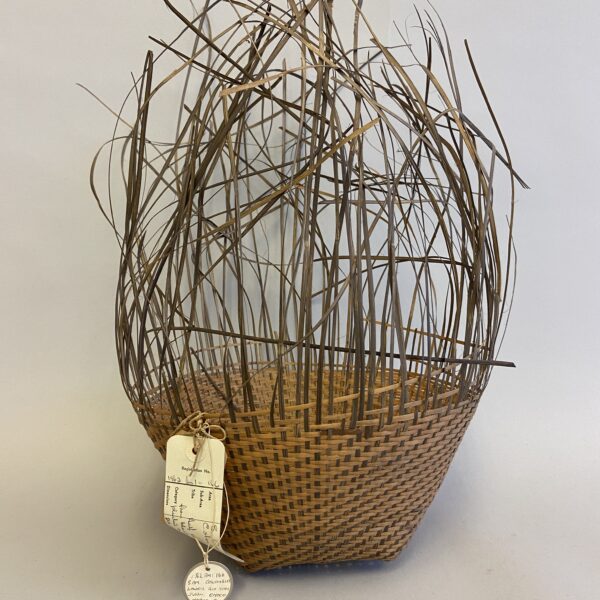
Chocó collection ©Trustees of The British Museum

Chocó collection ©Trustees of The British Museum

Chocó collection ©Trustees of The British Museum
SEE MORE >> The Chocó 1960s collection, British Museum
Because of my interest and direct relationship to this collection, SDCELAR and the British Museum invited me to be the principal investigator of this project that would later be titled Tributaries, like the book I will write, and we immediately began searching for more information regarding the trip and Moser and Tayler’s collection. This is how we landed at the British Library and the Pitt Rivers Museum at the University of Oxford.
In April 2022, I travelled to London to carry out the exploratory phase of my research. I came to know the audios held at the British Library in depth, we looked through more than two thousand photographs at the Pitt Rivers Museum, and I also had the fortune of meeting Brian Moser, who is still alive. At the Pitt Rivers, we found a copy of Donald Tyler’s travel journal and his notes on the contact sheets. Both in the audio and photographic collections, the presence of native Indians and Afros became stronger, with their own names and specific activities.
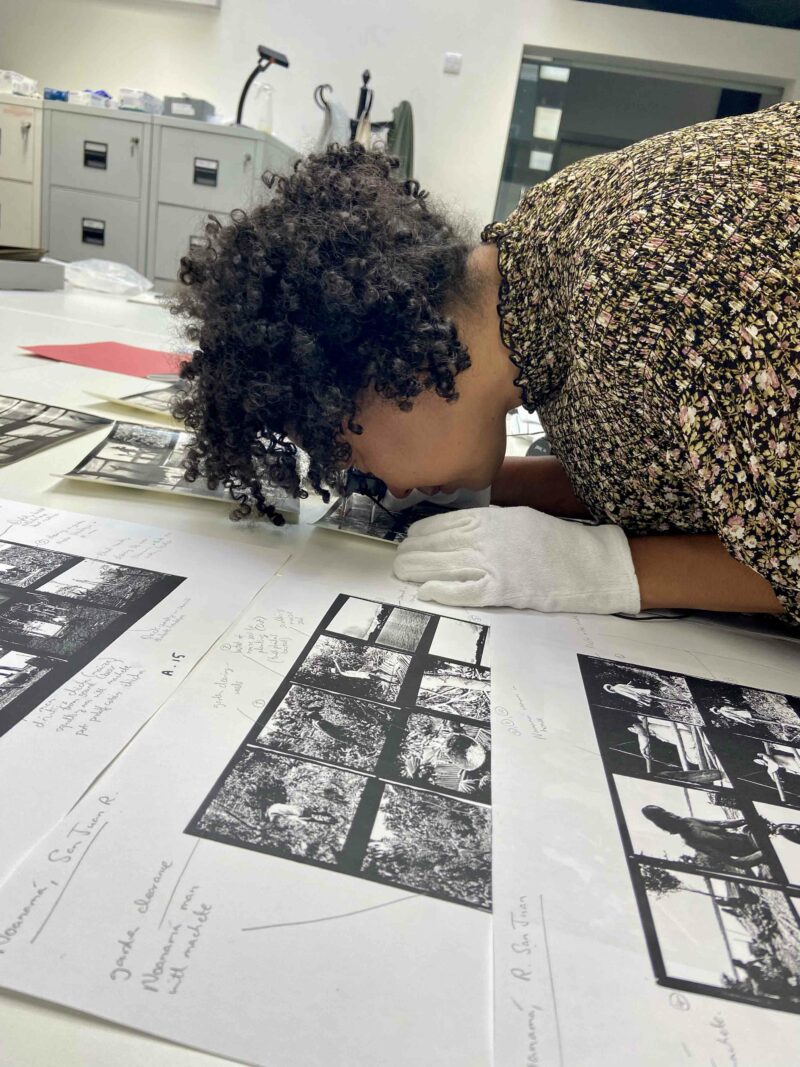
Velia Vidal looking at negatives and journals. ©Pitt Rivers Museum

Vynil with recordings made by Brian Moser and Donald Tayler in the 1960s. ©British Library
The encounter with Brian Moser and Donald Tayler’s story motivated me to review other journeys and travellers that visited the Chocó between 1928 and 1970, and that I had learned about due to different projects, recommendations, and activities after my return to the Chocó.
In July 2015, when I returned to the Chocó after having lived overseas, the first book I read was the Alto San Juan and Atrato Journal (Diario del Alto San Juan y del Atrato) by Eduardo Cote Lamus, who visited the Chocó in 1959 as a congressman, and who, in addition to official reports, also wrote a poetic text that recounts his trip and impressions of the region at that time.
In 2019, I was invited by artists Magdalena Walpott and Elkin Calderón to be a part of the project On the Other Side of the Isthmus (Del otro lado del istmo), that aimed to exhibit photographs Godula Buchholz took in 1961 during her trip down the San Juan River, as well as to publish her travel journal. For this publication, I was asked to write a piece that became a part of the book Hearing We Are River (Oír somos río), a text where I narrate my journey along the same river but in 2017. Two perspectives, two women from different times, of different ages, one a local, the other a foreigner. A way of questioning how we narrate a territory.
READ MORE >> 10 Latin American authors chose these objects to write captivating stories
As a result of this project, I learned about the travels of painter Guillermo Wiedemann, who, was in Buenaventura and the Chocó several times in the late fifties, he travelled across the San Juan River and provided Godula with very valuable information for her own trip. Both were part of the German community living in Bogota and worked in the cultural sector. He sent beautiful letters to his wife Cristina from different places, and his work undoubtedly gives an account of what his visits to these regions were like, not only through his paintings but also through his sketches.
Englishwoman Ann Osborn, who would later become an anthropologist, was Godula Buchholz’s travel partner. As an anthropologist, she set out on new routes to study other Indigenous communities in Colombia.
In 2018, I got to know and read Travel Snapshots (Instantáneas de viaje). A book by Delio Jaramillo that documents young students from the National University of Colombia travelling around the Chocó in 1928.
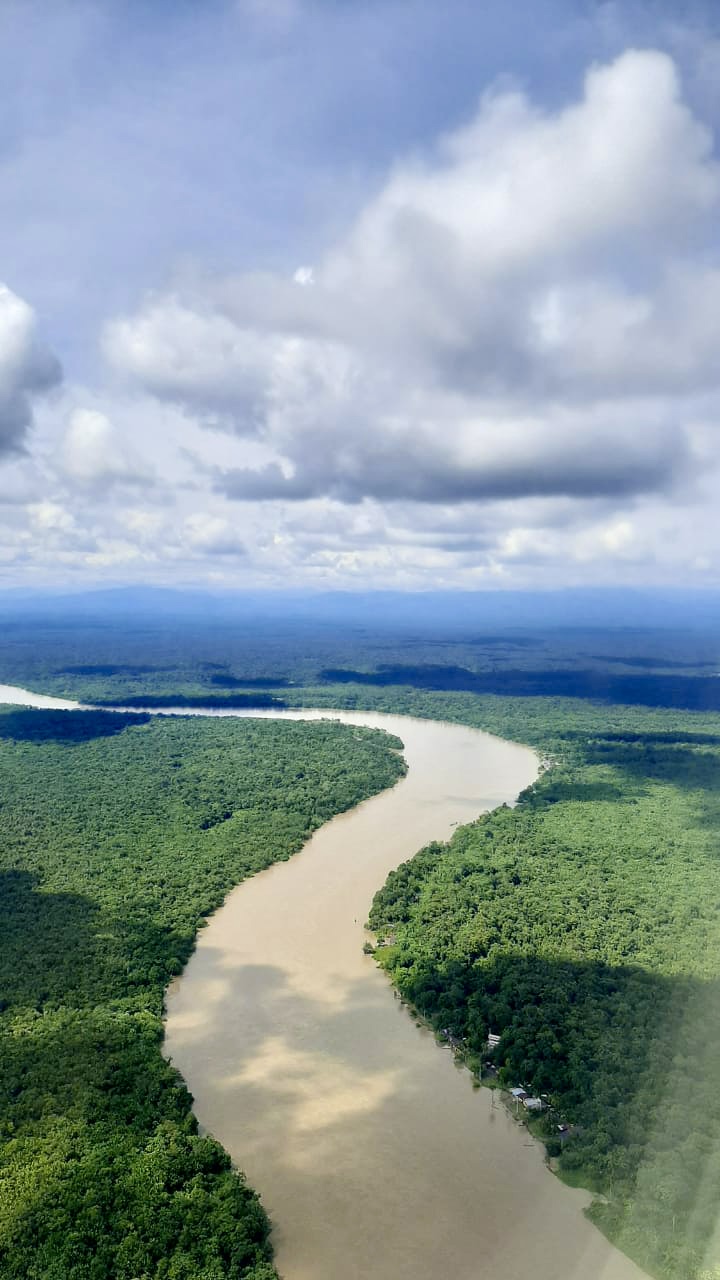
Atrato river, Colombia by Velia Vidal
In July 2022, when I returned to Colombia after my stay in London and other places across Europe, I visited Luis Ángel Arango Library to see Brian Moser’s photographs kept in their archives, and which mainly recount Brian’s trip to the Chocó, Baudo Region, in 1969.
After my visit to London, I accessed the online database and found that Cote Lamus’s trip, fragments of Guillermo Wiedemann’s work, Travel Snapshots, and many of Anne Osborn’s other books were part of the Americas collection at the British Library, as well as, obviously, Moser and Tayler’s vast audio collection, which is accompanied by some photographs not available to the public, and a book where they describe in detail the recordings that were turned into two records, almost ten years after their trip, also supported by the BIRS.
In August 2022, I travelled down the San Juan River thanks to the support of the ACADESAN Community Council. I made two trips where I visited the districts of La Unión, Bebedó, Negrí and Noanamá, belonging to the Municipality of Medio San Juan. I was also in Andagoya and Istmina.
During this trip, I had two encounters with the ELN guerrilla, I found similar objects to the ones held at the British Museum and was lucky enough to have some fragments of Moser and Tayler’s audio collection from the British Library translated for me by a group of Wounaan women. I also spoke to Sister Carmen, a Laurita missionary who lived in Noanamá between 1957 and 1961.
Around the time I was visiting San Juan, I was contacted from Zurich to talk about a collection with more than two thousand Noanamá objects brought to Europe by the anthropologist Boris Malkin and sold to different museums in Berlin, Basel, Zurich, and other cities. I hope I will be able to visit at least the Zurich collection by October of this year.

© Pitt Rivers Museum
All these trips and my encounter with the remaining records of them constitute what will be Tributaries. A non-fiction book that sprung up like a river and continued its course, its destiny, inevitably searching for the sea. And in the current, other rivers, streams, marshes that feed it, have merged with it, broadening its channel without ever demanding it stop its journey.
The main river of the book will be Brian Moser and Donald Tayler’s story, the audios from their trips held at the British Library, the objects at the British Museum, and the photographs from the Pitt Rivers Museum. I will not only narrate what they went through, but mainly my encounter with these documents and my view on their views.
To this main river I will add the experiences of other journeys from that time, as if they were tributaries that follow the same course: that of the foreign travellers that visit our lands inhabited by Afros and Indigenous.
One of the relevant elements in my points of analysis is the Afro presence, especially the relationship between their frequent absence in narratives and the process of political ethnicisation that was still incipient in 1969. The history of territorial ethnic processes may explain some elements of the way Afro culture is narrated and the travellers’ overwhelming interest in indigenous communities. Either way, some travellers include Afro culture in their written narratives, or pictorial in the case of Widemann, which documents an undeniable presence, whose narration is determined by the traveller’s gaze.
Tributaries will be a travel book and, at the same time, a book that challenges the relationships between north and south, racism and colonialism, and the way the other is depicted within anthropological and cultural processes. Additionally, I aim to reflect on the current situation in the San Juan region, considering that I live in the Chocó and have had the opportunity to walk along the river and confront the social situations we live here.
